
After 27 years, strong evidence implicates Rwandan dictator Paul Kagame in the downing of Hutu President Juvénal Habyarimana’s airplane
Just after 8 p.m. on the night of April 6, 1994, two surface-to-air missiles, fired from a location near Kigali airport, struck the Dassault Falcon 50 private jet of Rwanda’s Hutu President Juvénal Habyarimana.
After an explosion, the plane crashed just yards from Habyarimana’s home, with his kids watching in horror from their garden.

Habyarimana had been returning from a conference in Arusha, Tanzania, where a power-sharing agreement had been signed a year earlier between the Hutu and Tutsi.
Habyarimana died in the crash along with Burundian President Cyprien Ntaryamira, Major General Déogratias Nsabimana, Chief of Staff of the Rwandan Army, six other government officials and a three-man French crew.
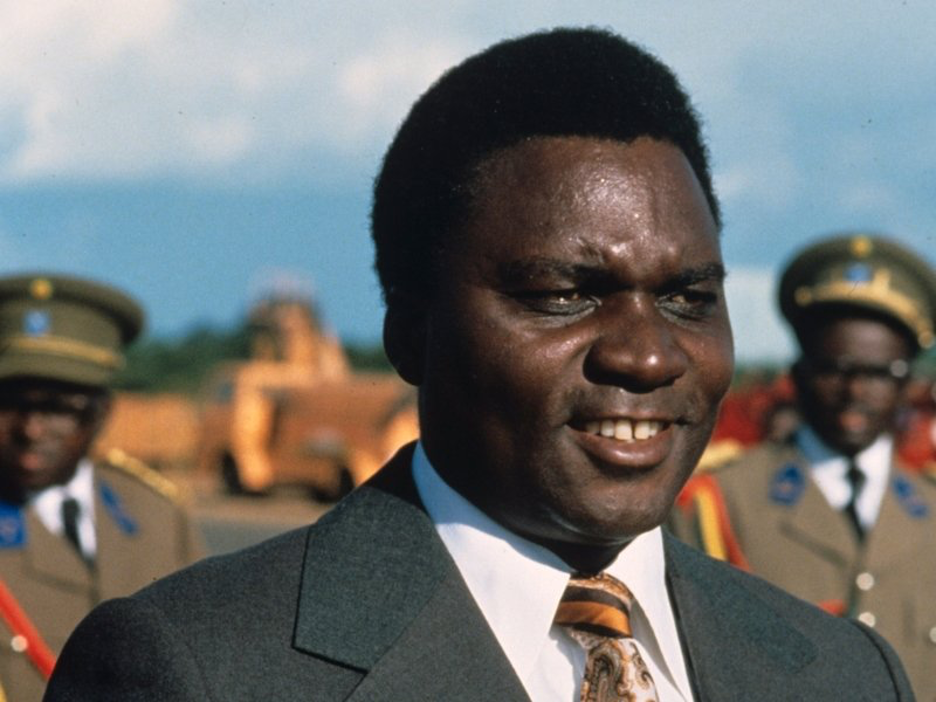
Within hours of the assassination, the Rwandan genocide commenced as Hutu militias (Interhamwe) began slaughtering Tutsis and Hutu moderates, while the Tutsi-led Rwandan Patriotic Front (RPF), led by Major General Paul Kagame, advanced its drive to seize power.

The Clinton administration and mainstream media at the time blamed Hutu extremists led by Colonel Théoneste Bagosora for shooting down Habyarimana’s plane, which BBC journalist Mark Doyle called “one of the great mysteries of the 20th century.”

Rwanda had been in civil war since October 1990, when the RPF invaded Rwanda from Uganda in an attempt to unseat the Hutu-dominated government, which had expelled the Tutsi who had allied with the Belgian colonialists prior to Rwanda’s independence in 1962.
A problem with the official story was that the Tutsi represented a minority in Rwanda, and the power-sharing agreement concluded at Arusha would have left the Hutu with majority power.
Habyarimana’s daughter, Marie-Rose, who works as a translator in Gatineau, Quebec, said that “people have closed their eyes … Two Hutu presidents and a Hutu army chief were killed in a plane attack, and we were supposed to believe that Hutus were behind this, as though they would naturally sabotage themselves. Those who really wanted to see the truth, who could have looked deeply, could have seen through these attempts to lie and deform history.”
The Roman philosopher Seneca once stated that “the one who derives advantage from a crime is the one most likely to have committed it.”
The main beneficiary in this case was the Tutsi-led RPF and Major Kagame, who seized power after Habyarimana’s death and has held onto it ever since.[1]
When asked about Habyarimana’s death in 2006, Kagame responded: “I don’t care,” noting that Habyarimana had made him grow up as a refugee, and that he was justified in fighting his government.[2]
Jim Lyons, an FBI Special agent who was assigned the task of investigating the crash as part of a UN team, stated “what better way for Kagame to become a hero than to start the genocide himself by shooting down the plane and then marching into Kigali with his army and saving everybody.”[3]

All Evidence Points to Kagame

An eight-year investigation by French magistrate Jean-Louise Bruguière, along with other independent investigations including one by a UN-appointed team, concluded that Kagame and the RPF shot down Habyarimana’s plane, and launched a planned and coordinated assault on the Rwandan government afterwards.[4]

The Rwandan army was found to have had radio signal intercepts recording an RPF commander stating that “target is hit” after the crash. In October 2011, Kagame’s former aide Theogene Rudasingwa stated that Kagame told him “with characteristic callousness and much glee” that he ordered Habyarimana’s plane shot down.[5]
Kagame’s former military chief of staff, Faustin Nyamwasa, who was one of nine indicted following Bruguière’s investigation, and six other high-ranking RPF officers, have also testified that Kagame ordered the shootdown of Habyarimana’s plane.[6]
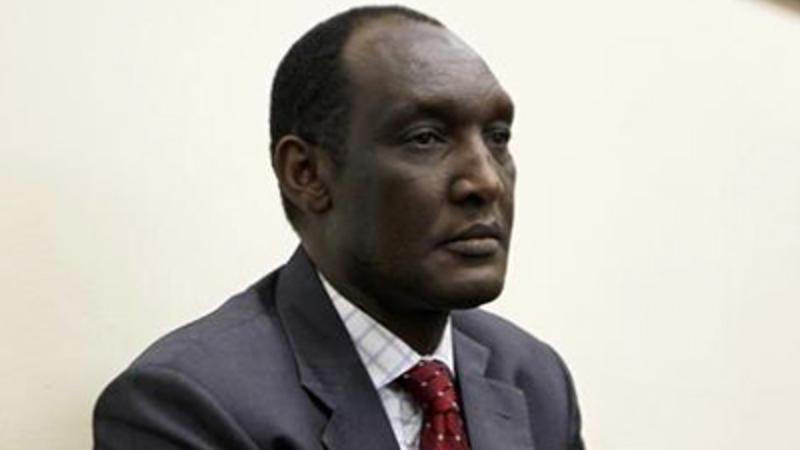
Among them is former RPF Captain Frank Tega, who claims that he was with Kagame and others at Kanombe in late July 1994 when they were having drinks and boasting about the RPF’s killing of Habyarimana.[7]
Kagame’s former bodyguard James Munyandinda, who had been charged with guarding the missiles, said that two RPF commandos, Eric Hakizimana and Frank Nziza, admitted to him in July 1994 that they had brought the missiles to Masaka and fired them at Habyarimana’s jet.

FBI Special agent Jim Lyons said that RPF informants told him during his investigation that a network of agents put together by Kagame had plotted to shoot down the presidential aircraft, and that there was no evidence that the Hutu government was behind it.

The Rwandan government, led by Kagame, has claimed—based in part on an investigation carried out by researchers at the UK Defense Academy—that the missiles had to have been fired near the Kanombe military camp, the President’s home, and the main Kigali airport, and this entire area was completely controlled by the Rwandan army.
However, the RPF could easily have infiltrated the area, as the Bruguière investigation concluded, and had experience shooting down aircraft (it shot down at least four during Rwanda’s civil war).
The missiles recovered shortly after the crash were Russian-made SA-16 missiles, which the RPF—and not the Rwandan army—was known to possess.[8]
Later the weapons—which Nyamwasa said were originally smuggled into Rwanda under a load of firewood—disappeared but were eventually seized by rebel forces in Congo and turned over to the UN.[9]
Belgian historian Filip Reyntjens found that the serial number was identical to a missile that had been fired by the RPF in May 1991 but had failed to explode.
About three weeks after the crash, local farmers found two SA-16 missile launchers in a valley near Masaka Hill within range of the airport that was accessible to the RPF.

According to the Russian military prosecutor’s office, the launchers had been sold to Uganda by the USSR in 1987.[10]
French army Captain Paul Barril, who served as an adviser to Habyarimana, claimed that the SA-16s had Iraqi numerical markings and that after Operation Desert Storm, the CIA transferred the missiles to the RPF from seized Iraqi arms caches.

The warehouse where they were stored, and then re-assembled in Kigali, was rented by a Swiss front company tied to the CIA, according to a whistleblower’s report published on the website intabaza.com.
French Foreign Minister Alain Juppé and Defense Minister François Leotard also claimed that members of the RPF received specialized missile training near Phoenix Arizona, which would indicate direct American complicity.[11]
Jean-Louise Bruguière told Boutros Boutros-Ghali, the UN Secretary-General at the time, that the CIA “was involved in the shootdown,” adding strength to Boutros-Ghali’s earlier statement that the Americans were “100% responsible for the Rwandan genocide.”

Christopher Black, the lawyer for Augustin Ndindiliyimana, chief of staff of the Gendarmerie under Habyarimana who was acquitted of war-crimes charges, alleged that Canadian General Romeo Dallaire, Commander of the United Nations Assistance Mission for Rwanda (UNAMIR), arranged for one axis of the runway at the airport to be closed at the request of the RPF, making it easier to shoot down the plane as it tried to land.[12]
According to the head of UNAMIR Jacques-Roger Booh-Booh, Dallaire had by this time “abandoned his role as head of the military to play a political role. He violated the neutrality principle of UNAMIR by becoming an objective ally of one of the parties in the conflict.”
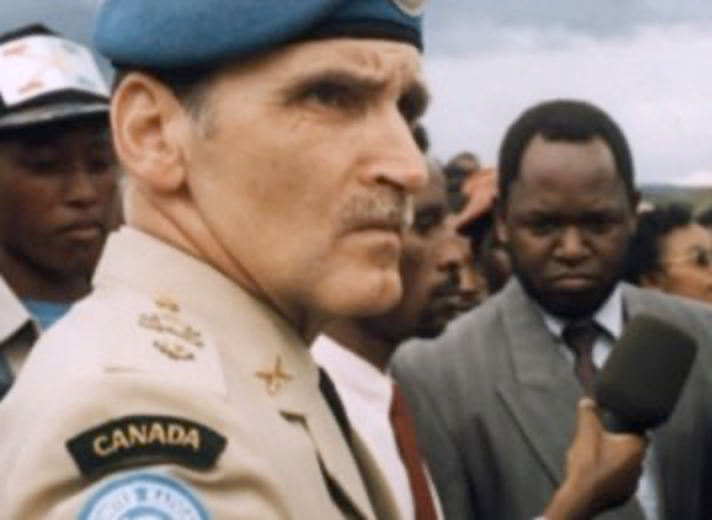
Significantly, after the plane crash, Kagame’s RPF forces circled around Kigali rather than heading south where most of the Interhamwe killings were taking place.[13]
The RPF carried out major massacres, with Kagame and his henchmen setting up open-air crematoria to dispose of the bodies efficiently.

According to Luc Marchal of UNAMIR, the RPF’s military maneuvers had to have been pre-planned over weeks or months, and could not simply have been in reaction to the first massacre of Tutsi, as the RPF claimed.[14]
Many Other Deaths
In 2007, an RPF defector writing in the Uganda Free Press, claimed that members of the RPF team that shot down President Habyarimana’s plane were all killed in order to erase evidence of the crime.
Two members of the crew—Private Joseph Nyamtale and Bosco Rumenera—were hacked to death at a roadblock immediately after fleeing from the scene.
The defector said that he survived based on luck after escaping from detention because of a careless guard, and fled to Uganda.
Journalist Judi Rever reported on the killing of Christophe Kayitare, who was allegedly stationed at the airport control tower to signal the arrival of Habyarimana’s plane and communicated with the missile team in Masaka, and Eric Leandre Ndayire, whose sister’s home was used to hide the missiles used in the attack.[15]
On April 7, 1994, Hutu Prime Minister Agathe Uwilingiyimana was killed in her home in an assassination that has never been properly investigated.
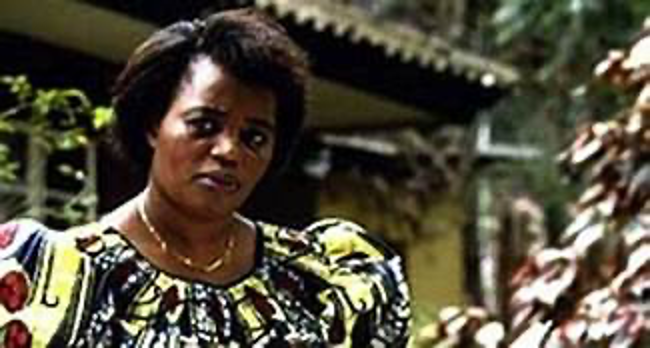
On July 1, 1996, Tanzania’s former director of security intelligence, Major General Imran Kombe was shot dead by policemen in Noshi in northern Tanzania after he had exited his car and showed police he was unarmed.
Prior to the April 6th shootdown of Habyarimana’s plane, Kombe had been tipped off about a possible assassination attempt against three leaders who were to have attended the Arusha conference—Habyarimana, Kenyan leader Daniel Arap Moi, and Congolese leader Joseph Mobutu.
It is thought that Kombe tipped off Moi, who then relayed the warning to Mobutu. Intelligence sources suggested that Kagame was the mastermind behind Kombe’s killing.[16]
In 2010, former Rwandan army chief Faustin Nyamwasa, who implicated Kagame in the killing of Habyarimana, survived an assassination attempt when shots were fired at his car in the driveway of his Johannesburg home. As he recovered in the hospital, another group of assailants tried to sneak into his room and strangle him with string.

In 2014 his house was broken into, leading South Africa to expel Rwandan diplomats from the country after linking its intelligence agents to the raid. Nyamwasa told The Associated Press that Kagame has hunted him and other dissidents around the world, “using hired killer squads.”
One of the victims of these squads was Colonel Theoneste Lizinde, an RPF defector[17] who said he attended a planning meeting for the presidential plane shootdown and implicated Kagame as the mastermind of the criminal plot.
Lizinde was assassinated in 1998 in Nairobi by agents from Rwanda’s foreign intelligence service, which was commanded at the time by Patrick Karegeya, who was himself strangled to death by Kagame’s hit squad at a hotel in Johannesburg on December 31, 2013.[18]
After Karegeya’s death, Kagame’s Minister of Defense said that “when you chose to be a dog, you die like a dog, and the cleaners will wipe away the trash so that it does not stink for them.”

In the 2014 BBC documentary “Rwanda’s Untold Story,” Nyamwasa referred to Kagame—whom Bill Clinton once praised as “one of the greatest leaders of our time”—as a “serial killer,” while a former development worker characterized Kagame as the “devil,” and his regime as “pure evil.”
The victims of Kagame’s hit squad have included his personal doctor, Gustave Makanon, and driver, and a popular gospel singer, Kizito Mihigo.

A senior regime official said that he once saw Kagame personally beat a colleague with sticks for buying curtains from a store not owned by the ruling party, which has vast assets and is controlled by Kagame. The victim was then sent to prison where he remained for nearly a decade.
In November 2014, Emile Gafirita (a.k.a. Emmanuel Migisha), was kidnapped in Nairobi and “disappeared” just before he was scheduled to travel to France to appear before Judges Marc Trévidic and Nathalie Poux to testify about the Habyarimana killing.
Gafirita had served as a child soldier in the RPF and purported to have insider knowledge about the plane shootdown. He is yet one more victim of the events of April 6, 1994, whose toll in human lives is staggering.
Fair-Haired Boy of the U.S. Government
Despite his long record of brutality, Kagame was for years lionized in the Western media, granted honorary degrees at prestigious universities including Harvard, feted by Hollywood celebrities, and in 2009 made the “Time 100” list of the world’s most influential people.[19]

This was all part of a publicity campaign orchestrated by U.S. intelligence agencies.
Jim Lyons, the former FBI agent, has testified that Kagame was the “fair-haired boy of the U.S. government and the Brits, trained by the CIA and MI6.”[20]
After the RPF invaded Rwanda illegally in October 1990, American aid was funneled through the RPF’s sponsor in Uganda, which purchased ten times more weapons in 1991 than in the preceding 40 years combined.
Roger Winter, head of the U.S. Committee for Refugees (USCR) and a suspected CIA agent, was decorated by Kagame at the July 4, 2012, celebration of the 16th anniversary of the RPF’s victory in Rwanda.
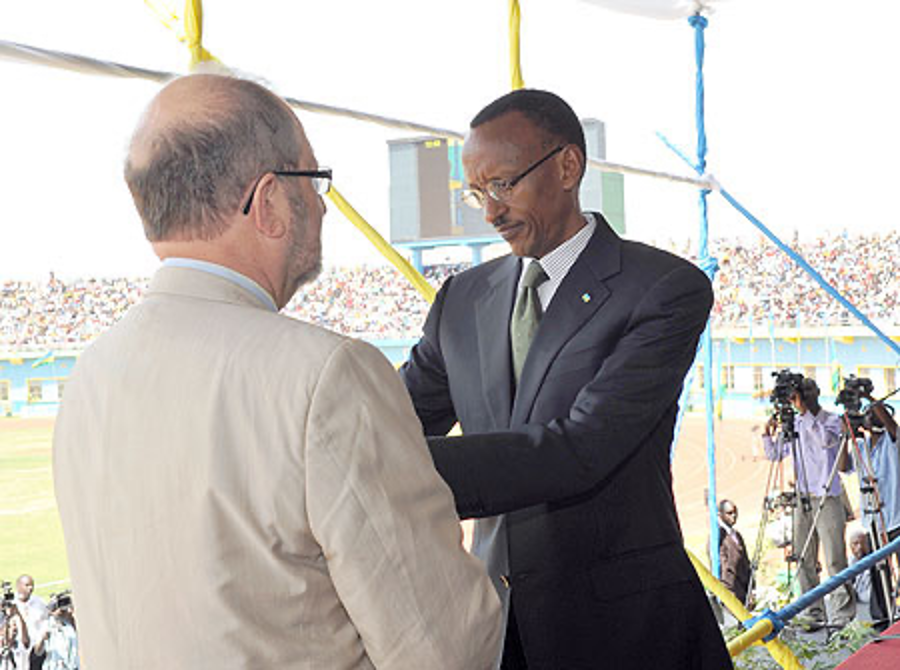
In the early 1980s, Winter had supported the National Resistance Movement (NRM) in Uganda led by Yoweri Museveni, Uganda’s current leader, Kagame and the Hemi Tutsi elite, who fought against Uganda’s then-President Milton Obote, a one-time socialist.
For the remainder of the decade, Winter worked to advance the militant plans of the Rwandan Tutsi elite, which had been expelled from Rwanda when the Hutu took over in the 1960s.

Winter helped establish USCR funding for RPF propaganda tracts and the RPF’s journal, Impuruza running from 1982 to 1994, which dehumanized the Hutu people, and organized a major conference of Tutsi exiles in Washington, D.C., in 1988 where a military solution to the Tutsi problem was decided.

In 1992, Winter put Kagame in touch with high-ranking bureaucrats in the U.S. State Department and allegedly briefed Clinton administration officials of the RPF’s military achievements when he was on the war’s front lines.
According to Bernard Lugan, a French historian and editor of the online journal L’Afrique Réelle, Winter was present at Kagame’s headquarters at Mulundi [in Rwanda] on the night of April 6,1994, when the plane crash occurred.

Kagame had learned many tricks of his trade fighting in the Ugandan bush war of the 1980s, where he earned a reputation for inflicting torture as an National Resistance Army (NRA) military intelligence officer.[21]
Roger Winter at this time was promoting low-intensity warfare methods, including psy-ops in which NRA guerrillas disguised as government forces committed atrocities, and Obote was accused of committing genocide.
Kagame never forgot how the tide in the war had turned when one of Obote’s top commanders, David Oyite-Ojok, had his helicopter shot down.

Kagame took control of the RPF following the October 2, 1990, assassination of RPF commander Fred Rwigyema, which Kagame is suspected of being behind.
Hundreds of RPF guerrillas were subsequently executed in internal ethnic fighting, with the victims’ bodies dumped into the Akagera River.
Abdul Ruzibiza, an RPF veteran, stated that “Kagame found himself at the head of an army that did not accept him. He maintained his rule through terror, assassination, imprisonment and executions.”[22]

When Rwigyema was selected by Museveni to attend an officers’ course at Fort Leavenworth, Kansas, Kagame went in his place and was trained in the art of psychological warfare and other counterinsurgency tactics including the art of deception.[23]

Kagame has since honed these tactics to perfection, staging atrocities repeatedly and blaming the Hutu for them while slandering anyone who challenges his narrative of events—including pertaining to Habyarimana’s assassination—as a genocide denier.[24]
According to J.E. Murphy, a former RPF intelligence officer writing under a pseudonym, the assassination [of Habyarimana] bore the signature of Bill Clinton, the U.S. President.
“Clinton wanted Habyarimana killed for Kagame to take over the country [Rwanda] no matter what cost. Important for Clinton was to get Mobutu out of Congo using Kagame and Museveni to carry out their mission. Several American corporations were interested with Congolese minerals, and the president had to enable them to get their piece of pie, and the only obstacle to that business was Mobutu, the dictator in Kinshasa who once was the cherished boy of [the] United States.”[25]
Kagame lived up to his potential when he twice invaded Congo and imposed a quisling ruler (Hyppolite Kanambe a.k.a. Joseph Kabila), who opened Congo to foreign exploitation.
Millions of Congolese were killed as Western corporations such as American Mineral Fields (AMF), headquartered in Hope, Arkansas (Bill Clinton’s hometown), and Barrick Gold, on whose board sat George H.W. Bush and ex-Canadian Prime Minister Brian Mulroney, received concessions for mining mineral resources worth more than $157 billion.[26]

Barriers to Prosecution
The geopolitical backdrop and huge profits helps to explain Kagame’s immunity from prosecution—despite the strong evidence implicating him in one of the great crimes of the late 20th century.
A January 2000 article in the Canadian National Post reported that Louise Arbour, the chief prosecutor for the International Criminal Tribunal for Rwanda (ICTR), had terminated an investigation into the shootdown of Habyarimana’s plane after three Tutsi informants came forward in 1997 with detailed accusations against Kagame and the RPF.

They claimed that they had been members of an “elite strike team” responsible for the downing.
Following the National Post’s article, a three-page memorandum written by investigator Michael Hourigan was sent to the ICTR where defense attorneys had requested it.
Hourigan stated that investigation into the shootdown of Habyarimana’s plane was clearly within his mandate and that he was “astounded” when Arbour made an about-face and told him it was not.
This sequence of events was confirmed by Hourigan’s boss, Jim Lyons, the former FBI agent who headed the so-called National Investigative Team.
Lyons believed Arbour was acting on orders to shut down the investigation. Arbour’s predecessor Carla Del Ponte had been fired when she too had pressed for it.

In April 2010, when Kagame was slapped with a $350 million wrongful death lawsuit by the widows of Habyarimana and Cyprien Ntarimana while visiting Oklahoma to give a commencement address, the Obama administration filed a Suggestion of Immunity on Kagame’s behalf, making it difficult to prosecute him.[27]

In France, the Bruguière investigation implicating Kagame in Habyarimana’s assassination was smothered by the political realignment in France prompted by the election in 2007 of Nicholas Sarkozy, who sought better relations with the U.S., and the appointment of Bernard Kouchner as French Foreign Minister.

François Hollande also pursued the same policy of his predecessor, as has Emmanuel Macron who was slated to visit Kigali during the commemoration of the genocide this year.[28]

Paul Rusesabagina, a Rwandan of mixed Hutu and Tutsi origin whose life-saving efforts were the basis of the 2004 film Hotel Rwanda and has now been jailed by the Kagame regime, has supported the allegation that Kagame and the RPF were behind the plane downing.
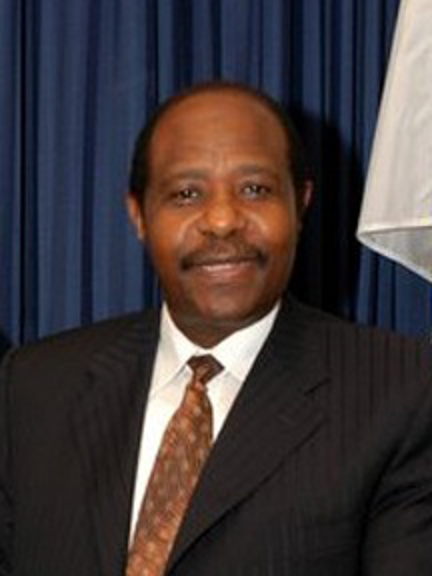
He wrote in November 2006 that it “defies logic” that the UN Security Council had not ordered an investigation, as it had done following the far less consequential assassination of Rafic Hariri in Lebanon in 2005.
The 27th anniversary marks an opportune time to follow Rusesabagina’s advice and finally carry out a definitive investigation of one of the 20th century’s last great crimes.
This investigation should focus on Kagame and the RPF along with their foreign backers in the U.S., UK and at the UN.

[1] See Judi Rever, In Praise of Blood: The Crimes of the Rwandan Patriotic Front (Toronto: Random House Canada, 2018).
[2] Rever, In Praise of Blood, 178.
[3] Rever, In Praise of Blood, 178.
[4] Edward S. Herman and David Peterson, The Politics of Genocide (New York: Monthly Review Press, 2010), 56, 60; Carla de Ponte, Madame Prosecutor: Confrontations with Humanity’s Worst Criminals and the Culture of Impunity (New York: The Other Press, 2009); John Conroy, Rwanda’s Untold Story (BBC, 2014).
[5] Michael Deibert, The Democratic Republic of Congo: Between Hope and Despair (London: Zed Books, 2013), 213; Barrie Collins, Rwanda 1994: The Myth of the Akazu Genocide Conspiracy and Its Consequences (New York: Palgrave Macmillan, 2014), 25.
[6] Conroy, Rwanda’s Untold Story; J.E. Murphy, U.S. Made (Meadville, PA: Christian Faith Publishing, 2015), 50, 51; Peter Erlinder, The Accidental Genocide (International Humanitarian Law Review, 2013), 25. Murphy, an ex-RPF intelligence officer writing under a pseudonym, alleges that the two missiles used to shoot down the presidential airplane were loaded in Mulundi by Sargeant Moses Nsenga, Sargeant Tumushukuru, Corporal Stanley Rwamapasi and Corporal Seromba. These soldiers were in the same high-command unit with Sargeant Aloys Ruyenzi, who was then acting intelligence officer, and the unit was personally commanded by Kagame. Corporal Eric Hakizimana and 2nd Lieutenant Frank Nziza fired the missiles from Masaka around 8:08 p.m. When Kagame was informed about the crash while watching an Africa Cup football match, he was happy, and ordered his troops to carry out immediate operations to take over the country.
[7] Collins, Rwanda 1994, 25.
[8] Helen C. Epstein, Another Fine Mess: America, Uganda, and the War on Terror (New York: Columbia Global Reports, 2017), 111, 112; Collins, Rwanda 1994, 25. Since the RPF had no aircraft, the Rwandan army had no need for anti-aircraft weapons.
[9] Judi Rever and Geoffrey York, “Seized Weapon Sheds Light on Mystery of Rwandan Genocide,” Globe & Mail, February 24, 2017.
[10] Epstein, Another Fine Mess, 111, 112. The RPF, it should be noted, had experience downing aircraft, having shot down at least four in Rwanda’s civil war from 1990 to 1994.
[11] Wayne Madsen, Genocide and Covert Operations in Africa, 1993-1999 (New York: Edwin Mellen, 1999), 113, 125; Collins, Rwanda 1994, 67.
[12] Christopher Black, “Top Secret: Rwanda War Crimes Cover-Up,” New Eastern Outlook, October 22, 2018, https://l-hora.org/?p=9374&lang=en. Black noted that Dallaire sided with the RPF during his mandate, gave continuous military intelligence to the RPF about government army positions, and let the RPF acquire arms and allowed UN forces to train them, according to Gilbert Ngjo, political assistant to the civilian commander of UNAMIR. Dallaire took his orders from the American and Belgian ambassadors and lied to his boss, Jacques-Roger Booh-Booh, about his knowledge of a build-up for a final Ugandan Army-RPF offensive. Dallaire also turned a blind eye to the infiltration into Kigali of possibly 13,000 RPF combatants when they were permitted only 600 under the Arusha Peace Accords signed in October 1993, and ignored their legion human rights abuses. See Yves Engler, Left, Right: Marching to the Beat of Imperial Canada (Montreal: Black Rose Books, 2019), 166, 167.
[13] Epstein, Another Fine Mess; Collins, Rwanda 1994.
[14] Marc de Miramon, “Brutal from the Beginning: The Truth About Everyone’s Favorite Strongman,” Harper’s Magazine, August 2019, https://harpers.org/archive/2019/08/brutal-from-the-beginning-paul-kagame-rwanda/
[15] Rever, In Praise of Blood, 188, 189.
[16] Murphy, U.S. Made, 48, 49; Madsen, Genocide and Covert Operations in Africa, 1993-1999.
[17] Lizinde had been jailed by the Habyarimana regime from 1980 to 1992 for plotting a coup against Habyarimana.
[18] Karegeya said that Kagame had caused Habyarimana’s plane to crash.
[19] Paul Street, “Kagame Goes to Harvard,” CounterPunch, April 22, 2016, https://www.paulstreet.org/kagame-goes-to-harvard/. Rever, In Praise of Blood; Keith Harmon Snow, “Ben Affleck, Rwanda, and Corporate Sustained Catastrophe,” Dissident Voice, January 23, 2009, https://dissidentvoice.org/2009/01/ben-affleck-rwanda-and-corporate-sustained-catastrophe-part-2/; Marc de Miramon, “Brutal from the Beginning: The truth about everyone’s favorite strongman,” Harper’s Magazine, August 2019, https://harpers.org/archive/2019/08/brutal-from-the-beginning-paul-kagame-rwanda/
[20] Rever, In Praise of Blood, 178.
[21] One of young Kagame’s jobs was to execute suspected double agents working for Milton Obote, which was undertaken by smashing their skulls with hoes. Kagame also allegedly locked POWs in trailers, with their decomposed bodies being discovered days later, Kagame’s ruthlessness earned him the nickname “Plato.” In 1985, he was involved in the hijacking of a Uganda Airlines aircraft.
[22] Kagame it should be noted had nothing more than a high school level education and one year of college level courses at a business college in Germany. After graduating from high school in the mid 1970s, he was a money changer before joining the Ugandan police force and intelligence service where he was part of the National Resistance Movement (NRM) led by Museveni at its inception. Kagame was born in Gitarama and had come from a well-connected family in Rwanda’s Tutsi elite, heralding from the Abaganda Tutsi clan. He grew up in refugee camps in Western Uganda after his family was forced to flee Rwanda in 1962.
[23] A sidekick of Kagame, Frank Rusagara, was sent by the Pentagon for training at the U.S. Naval Postgraduate School in Monterey, California.
[24] See Rever, In Praise of Blood.
[25] Murphy, U.S. Made, 52, 53.
[26] Dena Montague and Frida Berrigan “The Business of War in the Democratic Republic of Congo: Who benefits?” Dollars and Sense, July/August 2001, http://www.projectcensored.org/top-stories/articles/19-american-companies-exploit-the-congo/; Keith Harmon Snow and David Barouski, “Behind the Numbers: Untold Suffering in the Congo,” Third World Traveler, http://www.thirdworldtraveler.com/Africa/Congo_BehindNumbers.html; Madsen, Genocide and Covert Operations in Africa 1993-1999, 69-74; and Peter Eichstadt, Consuming the Congo: War and Conflict Minerals in the World’s Deadliest Place (New York: Lawrence Hill Books, 2011).
[27] Jeremy Kuzmarov, Obama’s Unending Wars: Fronting the Foreign Policy of the Permanent Warfare State (Atlanta: Clarity Press Inc., 2019), 100.
[28] Robin Philpot, Rwanda and the New Scramble for Africa: From Tragedy to Useful Imperial Fiction (Montreal: Baraka Books, 2013), 115.
CovertAction Magazine is made possible by subscriptions, orders and donations from readers like you.
Blow the Whistle on U.S. Imperialism
Click the whistle and donate
When you donate to CovertAction Magazine, you are supporting investigative journalism. Your contributions go directly to supporting the development, production, editing, and dissemination of the Magazine.
CovertAction Magazine does not receive corporate or government sponsorship. Yet, we hold a steadfast commitment to providing compensation for writers, editorial and technical support. Your support helps facilitate this compensation as well as increase the caliber of this work.
Please make a donation by clicking on the donate logo above and enter the amount and your credit or debit card information.
CovertAction Institute, Inc. (CAI) is a 501(c)(3) non-profit organization and your gift is tax-deductible for federal income purposes. CAI’s tax-exempt ID number is 87-2461683.
We sincerely thank you for your support.
Disclaimer: The contents of this article are the sole responsibility of the author(s). CovertAction Institute, Inc. (CAI), including its Board of Directors (BD), Editorial Board (EB), Advisory Board (AB), staff, volunteers and its projects (including CovertAction Magazine) are not responsible for any inaccurate or incorrect statement in this article. This article also does not necessarily represent the views the BD, the EB, the AB, staff, volunteers, or any members of its projects.
Differing viewpoints: CAM publishes articles with differing viewpoints in an effort to nurture vibrant debate and thoughtful critical analysis. Feel free to comment on the articles in the comment section and/or send your letters to the Editors, which we will publish in the Letters column.
Copyrighted Material: This web site may contain copyrighted material the use of which has not always been specifically authorized by the copyright owner. As a not-for-profit charitable organization incorporated in the State of New York, we are making such material available in an effort to advance the understanding of humanity’s problems and hopefully to help find solutions for those problems. We believe this constitutes a ‘fair use’ of any such copyrighted material as provided for in section 107 of the US Copyright Law. You can read more about ‘fair use’ and US Copyright Law at the Legal Information Institute of Cornell Law School.
Republishing: CovertAction Magazine (CAM) grants permission to cross-post CAM articles on not-for-profit community internet sites as long as the source is acknowledged together with a hyperlink to the original CovertAction Magazine article. Also, kindly let us know at info@CovertActionMagazine.com. For publication of CAM articles in print or other forms including commercial internet sites, contact: info@CovertActionMagazine.com.
By using this site, you agree to these terms above.
About the Author

Jeremy Kuzmarov holds a Ph.D. in American history from Brandeis University and has taught at numerous colleges across the United States. He is regularly sought out as an expert on U.S. history and politics for radio and TV programs and co-hosts a radio show on New York Public Radio and on Progressive Radio News Network called “Uncontrolled Opposition.”
He is Managing Editor of CovertAction Magazine and is the author of six books on U.S. foreign policy, including Obama’s Unending Wars (Clarity Press, 2019), The Russians Are Coming, Again, with John Marciano (Monthly Review Press, 2018), Warmonger. How Clinton’s Malign Foreign Policy Launched the U.S. Trajectory From Bush II to Biden (Clarity Press, 2023); and with Dan Kovalik, Syria: Anatomy of Regime Change (Baraka Books, 2025).
Besides these books, Kuzmarov has published hundreds of articles and contributed to numerous edited volumes, including one in the prestigious Oxford History of Counterinsurgency .
He can be reached at jkuzmarov2@gmail.com and found on substack here.






[…] committed by the RPF and by Paul Kagame himself—who triggered the mass killings in Rwanda by invading the country illegally from Uganda, and as evidence indicates, shot down the airplane of Hutu president Juvenal Habyarimana—he and […]
[…] spáchaných RPF a samotným Paulom Kagame – ktorý vyvolal masové zabíjanie v Rwande nezákonným vpádom do krajiny z Ugandy a ako dôkazy naznačujú, zostrelil lietadlo hutuského prezidenta Juvenala Habyarimana – on […]
[…] Winter. PHOTO CREDIT: Covert Action Magazine. Roger Winter and Jeff Drumtra used USCOR to promote and legitimize the RPF. PHOTO CREDIT: Covert […]
[…] Obama e o presidente de Ruanda, Paul Kagame, que mataram três chefes de Estado e cujas forças executaram crematórios a céu aberto para elimin… . [Fonte: chimpreports.com ] […]
[…] and Rwandan President Paul Kagame who killed three heads of state and whose forces ran open air crematoria to more efficiently dispose…. […]
This whole judgment of Kagame is so easy if you don’t consider history, Rwanda was ruled by a tutsi mornachy who despite being so callous to Hutus never chased them out of the country or massacred them, Things turn around and the Hutu are in power, do they treat tutsis the same way? No they expel them to a humiliating exile for 3 decades and massacre tens of thousands. Any attempt to return is met with more deaths and expulsions.
Finally these guys muster enough strength and return only for their leader to be killed first by the Hutu. What did people expect? Nobody defended these refugees for 30 years even when Obote, Uganda’s president attacked them in camps. Finally Museveni in the bush is their only hope.
If you want to blame Kagame for the death of Habyarimana, how about Fred Rwigyema? If you want to blame him for the genocide, who started it 30 years back? If you want to blame him for resisting opposition, would you rather he is sent back to camps with his redeemed again? Kagame is not against hutus but against their animosity and lack of acceptance of their brothers
[…] that the US did intervene in covert operations aiding the assassination of Hutu President Juvenal Habyarimana whose plane was shot down in a […]
[…] that the US did intervene in covert operations aiding the assassination of Hutu President Juvenal Habyarimana whose plane was shot down in a […]
[…] incursion in Rwanda have been at all justifiable or desirable either? Nevermind that the U.S. did intervene in covert operations aiding the assassination of Hutu President Juvenal Habyarimana whose plane was […]
[…] that the U.S. did intervene in covert operations aiding the assassination of Hutu President Juvenal […]
[…] in Rwanda have been at all justifiable or desirable either? Never mind that the U.S. did intervene in covert operations aiding the assassination of Hutu President Juvenal Habyarimana whose plane […]
[…] Cocaine Import Agency 31) CIA Murdered Rwanda & Burundi Presidents to Unleash 1994 Genocide https://covertactionmagazine.com/2021/04/06/still-unsolved-the-great-crime-that-triggered-the-1994-r… 32) Former CIA Chief James Woolsey Says He Is No Longer A UFO […]
[…] In subsequent years, Clark publicly denounced U.S. support for the Shah of Iran, the bombing of Libya (in 1986 and 2011), Grenada, Bosnia, Kosovo, Panama, Afghanistan and Iraq, among other countries, and criticized U.S. support for the Tutsis in Rwanda whom he believed started the war there and killed more than the Hutu.[1] (see CAM exclusive on this) […]
[…] Cocaine Import Agency 31) CIA Murdered Rwanda & Burundi Presidents to Unleash 1994 Genocide https://covertactionmagazine.com/2021/04/06/still-unsolved-the-great-crime-that-triggered-the-1994-r… 32) Former CIA Chief James Woolsey Says He Is No Longer A UFO […]
Although the United States has often not lived up to the Ideals of it founding fathers according to
The World Giving Index (WGI) an annual report published by the Charities Aid Foundation,
the United States has been the number one country on the WGI report for the last ten years, with a score of 58%. Of those surveyed, 72% reported helping a stranger, 61% reported donating to a charity, and 42% reported having volunteered their time to an organization. The U.S., however, has seen a decrease in its numbers over the years.
America hired some of the Germans responsible for the killing of so many Jews after WW2. After the defeat of Japan America also took Japanese torturers of the Chinese to the US because they had info on how to kill efficiently. When it comes to Africa America played an active role in the killing of democratically elected leaders, and others, who would have made Africa a more peaceful place. American efforts in Africa resulted in the killing of millions and those efforts continue.